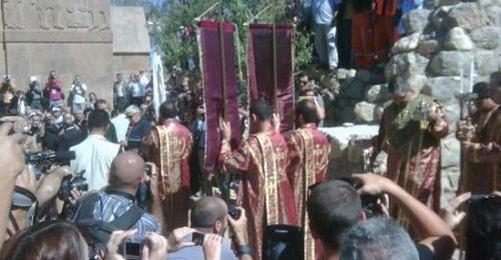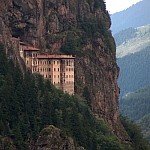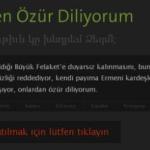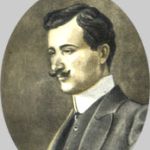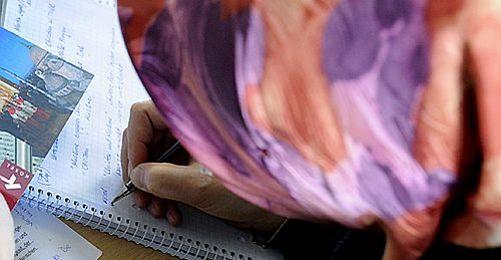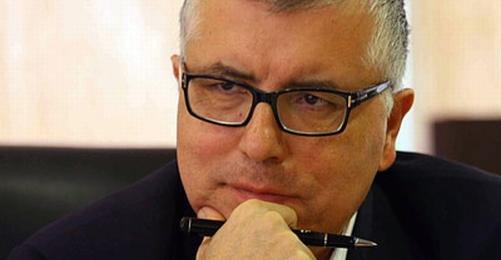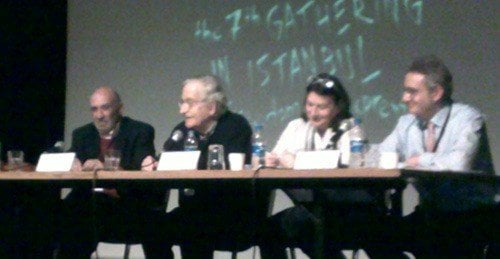After 95 years, the first mass was held at the Armenian Church of the Holy Cross on the Akdamar Island in the Lake Van (south-eastern Turkey). It was the first service celebrated after the events in 1915 during the time of the Ottoman Empire, when millions of Armenian citizens were forcibly sent into exile as claimed by many Armenians and also an increasing number of Turks. Many people starved, die of exhaustion or were killed by gangs. The Head of the Armenian Patriarch Clerical Assembly, Archbishop Aram Ateşyan, said that many people did not attend the mass in order to express their protest against the fact that the church's iron cross had not been installed atop its dome before.
The cross was planned to be installed on 12 September, the Armenian fest of Khacverats which is celebrated each year on the Sunday closest to 14 September. However, the installing of the cross was postponed because of the referendum on the constitutional reform package on 12 September.
One day prior to the mass, Armenian people living abroad and Turkish Armenians started to arrive. The two-meter high iron cross ordered by the Istanbul Armenian Patriarchy was not put atop the dome yet but preliminarily mounted next the church's entrance. This was seen as the reason for a relatively low attendance of the service. Some groups decided not to attend the Sunday service because the cross has not been put in place yet.
Ateşyan: The people who decided not to come are right
Archbishop Ateşyan told the Provincial Mufti during a visit: "People boycott the service because of the cross".
In an interview with Hürriyet newspaper Ateşyan said, "It is as if we had gone into exile and returned now, like completing an exodus". He continued:
"I think the people who do not attend the mass are right because it was promised to us that 'we would see the cross in the service'. I want to believe that the government keeps its promise. Otherwise, I will be put in a bad position towards the Armenians abroad, I will be a liar".
Peal of bell via loudspeakers
The liturgy started at 11.00 am on Sunday (19 September) with the peal of bell transmitted via loudspeakers. Ateşyan held the three-hour service. Only 50 people were admitted inside the church due to its small size. The other visitors followed the mass via two large screens mounted on the south and west side of the church.
50 plainclothes policemen were on the island, 500 police officers were on the pier. The people disembarking on the island went through an ID check.
Koptaş: We have to face the past
Rober Koptaş, publication director of the Armenian Agos newspaper, attended the service on the island. In an interview with Hande Aşık from CNN Türk Koptaş said:
"We would have very much appreciated a bigger crowd, but this was up to the efforts of the Turkish government. We feel at home here on this day. We could have hosted more people. The crisis emerged from the cross was unnecessary. Can this not be resolved? What we should actually ask is why the church has been turned into a museum. We cannot really face the past if we do not give an answer to this question. If we do not face the past, it gives ground for discussions such as where the cross was installed. It needs a deeper inquiry to face the past".
The Armenian Cathedral of the Holy Cross was built between 915 and 921 by King Gagik I of the Armenian Kingdom of Vaspurakan. The church with its holy cross is important for the Armenians. After the Armenian congregation had been forced to leave around 1915, the church was left to decay for many years. The Ministry of Culture restored the cathedral between 2005 and 2007 and it became a museum in 2007. (SP/VK)





